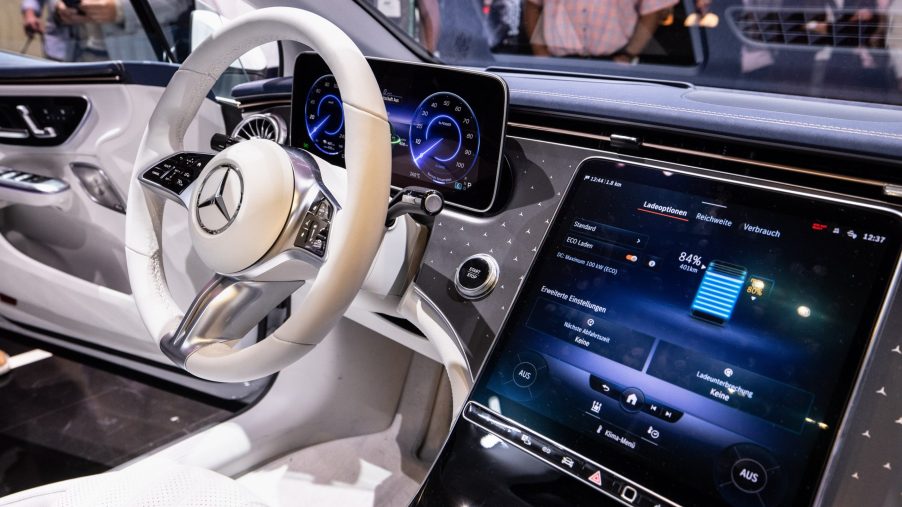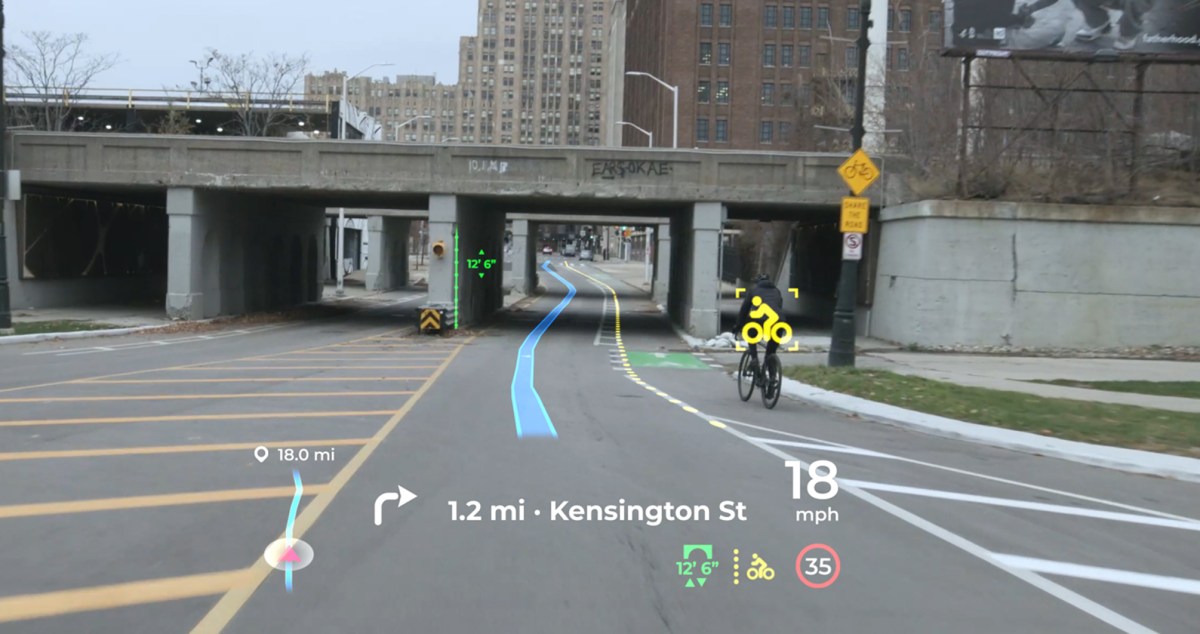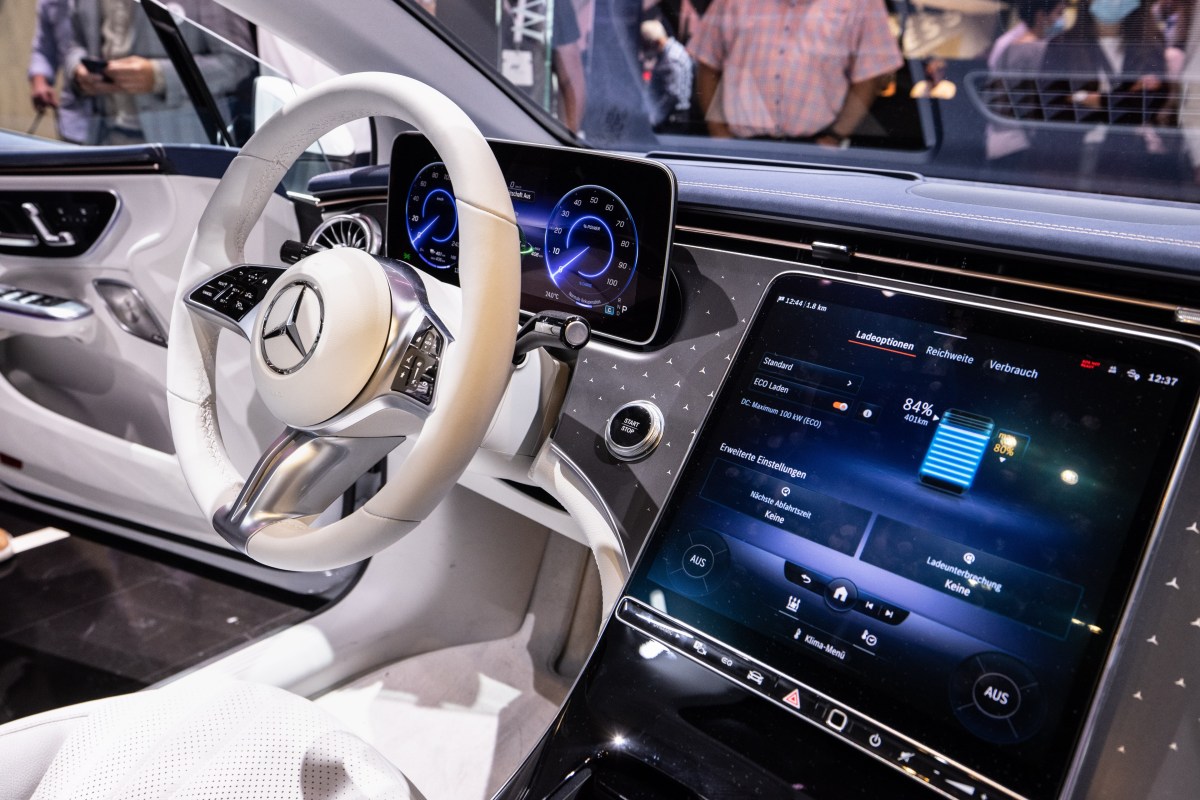
7 Features Car Buyers Want the Least on New Cars
Shopping for a new car can be complicated. Beyond the choice of make and model, most cars now have a bewildering array of options, packages, and accessories. These options often group related equipment together, like advanced safety features, performance upgrades, and entertainment features, but they also can include technology that car buyers don’t want.
A recent study by AutoPacific looked at demand for specific new car features. They compiled market research from 90,000 new-car buyers and lessees, measuring demand for over 100 specific vehicle features.
Demand is high for features like heated front seats, blind-spot monitoring, and parking sensors. Perhaps more revealing about car-buying trends are the features that shoppers don’t want on a new car. Here are the seven features car buyers want the least on their new vehicle.
Augmented reality heads-up display

Many cars offer a heads-up display system, often part of a larger technology options package. Those systems project information, such as speed and navigation instructions, directly onto the windshield in front of the driver. Augmented reality systems take this one step further by overlaying information on top of what you see out of the windshield.
Systems like those developed by Panasonic can recognize and highlight pedestrians, road signs, and give information about your surroundings. As it turns out, these types of systems can be just as distracting as they are helpful. Of those surveyed, only 14% would want this feature on their new car.
Electronic engine noise enhancement
Fake engine noise is just that, fake. You can tell it’s fake, and it adds nothing to the experience of driving a car. BMW has been called out on this feature for years, but as more and more engines become smaller and turbocharged to meet emissions standards, the side-effect is that they become quieter.
A turbocharger can sometimes have the effect of quieting engine noise, a problem that buyers of the McLaren MP4-12C complained about frequently when the car debuted. As it turns out, no noise is better than fake noise, and only 13% of those surveyed would want artificial engine noise on their vehicle.
Ability to purchase things from the infotainment system

Vehicle infotainment systems have continually evolved to offer more features and provide more information. They are approaching iPad or laptop sophistication and, in the case of Tesla, can command an enormous amount of features within the vehicle.
The one feature that most buyers don’t want in their infotainment system is the ability to make purchases. Perhaps car buyers feel that the car should already come with all the features and apps they need or that shopping from the center screen of a vehicle would be distracting. Regardless, only 12% of those surveyed thought it was a good idea.
Biometric features
Biometric features encompass a wide range of technology built into modern cars. This includes voice recognition, fingerprint scanners, and face recognition. If you have ever struggled with getting your vehicle’s voice recognition system to work properly, you’ll know that these systems are not 100% perfect.
It is no surprise that only 9% of people participating in AutoPacific’s survey wanted these features on their vehicle.
Gesture controls
Much like biometric features, gesture controls are becoming prevalent in new cars. Currently, BMW makes use of this technology extensively.
The system recognizes certain hand gestures to control features of the car, often the stereo, navigation, and other systems in the infotainment display. Early versions of this tech were hit or miss, but BMW has invested heavily in this technology in recent years and has made good progress. Despite this, only 9% of survey participants want the tech on their new car.
Concierge services
Vehicle concierge services are typically part of a vehicle’s maintenance and warranty package. They involve the dealership picking up your car, dropping off a loaner, and completing the servicing without the owner ever having to go to the dealership.
It may be convenient, but it is a service that is not in high demand. Only 7% of those surveyed wanted this feature on their new car.
Fully autonomous, hands-free driving
Fully autonomous driving features have been in development for several years, with Tesla leading the charge on this technology. Proponents advocate that the technology could eliminate human error and prevent accidents and deaths, but the technology is currently far from faultless.
It would appear that there is a trust issue with this technology. Given the relative newness of the technology and the well-documented failures, that is entirely understandable. Only 7% of survey participants thought it was a feature worth having on their new car.
New cars are loaded with more features, technology, and systems than ever before. More often than not, they improve the useability of the vehicle or enhance its capabilities and comfort. However, there are still features that buyers aren’t interested in. If you are shopping for a new car, pay close attention to the options and packages included in the vehicle. This will list the individual features and technology included and allow you to make an informed decision about the equipment installed on your new car.


